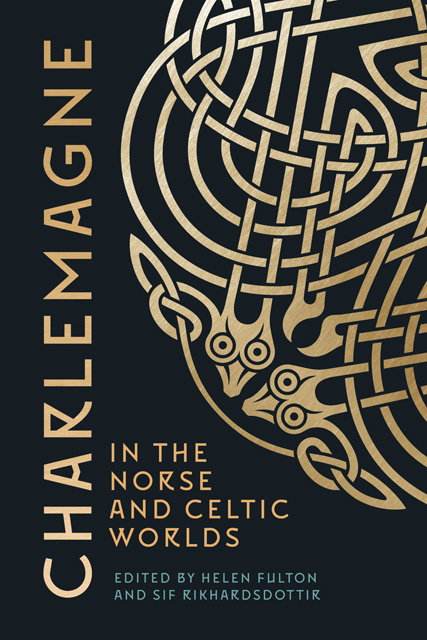Charlemagne in the Norse and Celtic worlds
 The reception of the Charlemagne legends among Nordic and Celtic communities in the Middle Ages is a shared story of transmission, translation, an exploration of national identity, and the celebration of imperialism. The articles brought together here capture for the first time the richness of the Charlemagne tradition in medieval Norway, Sweden, Denmark, Iceland, Wales and Ireland and its coherence as a series of adaptations of Old French chansons de geste.
The reception of the Charlemagne legends among Nordic and Celtic communities in the Middle Ages is a shared story of transmission, translation, an exploration of national identity, and the celebration of imperialism. The articles brought together here capture for the first time the richness of the Charlemagne tradition in medieval Norway, Sweden, Denmark, Iceland, Wales and Ireland and its coherence as a series of adaptations of Old French chansons de geste.
Emerging from the French sources is a set of themes which unite the linguistically different Norse and Celtic Charlemagne traditions. The ideology of the Crusades, the dichotomy of Christian and heathen elements, the values of chivalry and the ideals of kingship are among the preoccupations common to both traditions. While processes of manuscript transmission are distinctive to each linguistic context, the essential function of the legends as explorations of political ideology, emotion, and social values creates unity across the language groups. From the Old Norse Karlamagnús saga to the Irish and Welsh narratives, the chapters present a coherent set of perspectives on the northern reception of the Charlemagne legends beyond the nation of England.
zum Buch im ULB-KatalogPlus
zum Buch auf der Verlags-Website
Crossdressing in der altnordischen Literatur
 Von der Verkleidung eines Gottes als Braut bis zu Königstöchtern in Ritterrüstungen: Crossdressing ist ein über die verschiedenen Gattungen der altnordischen Literatur weit verbreitetes Motiv. Zu seinen Manifestationen gehören Verkleidungen, die für die Haupthandlung einer Erzählung relevant sind, ebenso wie gewitzte bis tragische Verwirrspiele, abenteuerliche Fluchtepisoden und kämpfende Schildmaiden. Die Analyse der Beispiele im Hinblick auf Verkleidungsarten, Verhalten im Zusammenhang mit Crossdressing, Beweggründe und Folgen sowie üblicherweise mit Crossdressing verbundene literarische Motive zeigt Mängel der bisherigen Forschung auf und plädiert für offenere Interpretationen unter Einbezug aktueller Erkenntnisse zu Geschlechterfragen.
Von der Verkleidung eines Gottes als Braut bis zu Königstöchtern in Ritterrüstungen: Crossdressing ist ein über die verschiedenen Gattungen der altnordischen Literatur weit verbreitetes Motiv. Zu seinen Manifestationen gehören Verkleidungen, die für die Haupthandlung einer Erzählung relevant sind, ebenso wie gewitzte bis tragische Verwirrspiele, abenteuerliche Fluchtepisoden und kämpfende Schildmaiden. Die Analyse der Beispiele im Hinblick auf Verkleidungsarten, Verhalten im Zusammenhang mit Crossdressing, Beweggründe und Folgen sowie üblicherweise mit Crossdressing verbundene literarische Motive zeigt Mängel der bisherigen Forschung auf und plädiert für offenere Interpretationen unter Einbezug aktueller Erkenntnisse zu Geschlechterfragen.
zum Buch im ULB-KatalogPlus
zum Buch auf der Verlags-Website
